If you’re out hiking in the mountains this time of year and spot a shrub loaded with small, dark berries, you might have just stumbled into one of the Pacific Northwest’s best-kept wild secrets – huckleberries. Mid to late summer marks the height of huckleberry season in the region, and this year’s crop is looking especially good.
We recently found two types of huckleberries while exploring the slopes of Mt. Hood on the edges of Lost Lake. Both were loaded with berries, each with slightly different flavors and leaf structures, which makes identification part of the fun. But Mt. Hood is just one place to go huckleberry hunting – there are plenty of other hot spots in the Northwest if you know where to look.
When Is Huckleberry Season?
In most areas, huckleberry season starts in late July and runs through September, depending on elevation and sun exposure. Lower elevations ripen first, with the berries in higher, subalpine zones usually ready by mid to late August.
A good rule of thumb: if the mosquitoes are finally letting up and the mornings start to feel a little crisp, it’s probably prime time to fill a tin cup with huckleberries.
Where to Find Huckleberries in the Pacific Northwest
You can find wild huckleberries all over the Cascades and the Northern Rockies, but here are some standout regions worth checking out:
- Mt. Hood National Forest – Especially around Clear Lake, Lookout Mountain, Lost Lake and the eastern flanks.
- Gifford Pinchot National Forest (WA) – The Indian Heaven Wilderness is legendary for berry-picking in August.
- Mt. Adams – A hotspot for serious foragers, with expansive berry fields on the southwestern slopes.
- Mt. Rainier National Park – Huckleberries are common in subalpine meadows, but note the stricter harvesting rules here.
- Mt. St. Helens National Volcanic Monument – Open areas around the blast zone are now teeming with berry bushes.
- Eastern Oregon – The Wallowas and Blue Mountains also offer solid picking grounds, especially in meadows and forest edges.
Harvesting Rules and Legalities
Before you start loading up buckets, it’s important to know the rules. Most national forests allow for personal-use harvesting (typically up to 1 gallon per day per person), but commercial harvesting requires a permit.
- National Forests: Usually allow limited personal harvests without a permit. Check local ranger stations for daily limits.
- National Parks: Often prohibit picking, or allow only incidental consumption (aka, eat a few, don’t pick a bag full).
- State Parks & Wilderness Areas: Rules vary. When in doubt, check the posted signage or look online.
Respect nature and leave some for others—including the wildlife that depends on these berries.
How to Identify Huckleberries
Huckleberry identification isn’t too complicated once you know what to look for. Two common varieties we found recently on Mt. Hood are:
- Black Huckleberry (Vaccinium membranaceum) – Darker, shiny berries with long oval shaped leaves that have serrated edges and yellow/green twigs.
- Oval-leaf Huckleberry (Vaccinium ovalifolium) – Duller berries that look more like blueberries (it is often called the Alaska blueberry). Leaves are shorter and more oval shaped with smoother edges.
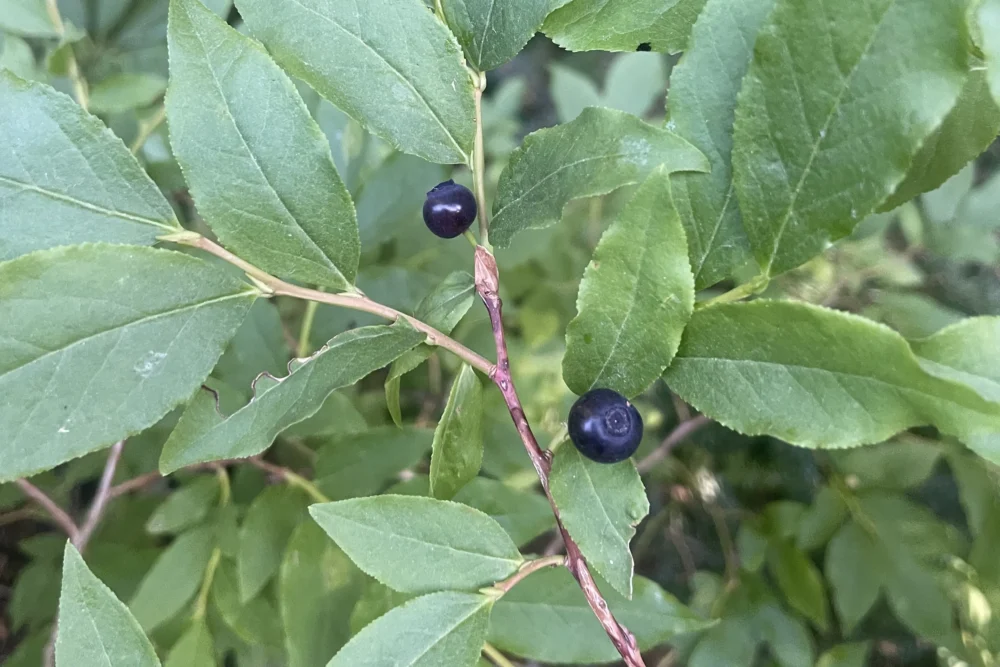
General tips:
- Berries are usually deep blue, purple, or black, sometimes with a powdery coating.
- The shrubs typically grow 1 to 6 feet tall, depending on species and elevation.
- Most berries grow singly, not in clusters like blueberries.
Mistake to avoid: Don’t confuse them with salal (which are edible but less tasty) or potentially toxic berries like pokeweed or nightshade. If you’re unsure, always double-check with a field guide or app before eating.
Should You Wash Them?
Yes, especially if you plan to cook with them or eat a lot at once. A quick rinse will remove dust, bugs, and the occasional hitchhiking spider. That said, most folks out on the trail will pop them straight into their mouth—and that’s perfectly fine for a few here and there.
How to Use Them
Huckleberries pack a punch of tart-sweet flavor that makes them perfect for all kinds of recipes. If you don’t like how they taste right off the plant, using them in a recipe can sweeten them up and make them more palatable. Some of the best ways to enjoy them include:
- Huckleberry pancakes or waffles – a camping favorite
- Jam or preserves
- Pie or crisp (alone or mixed with other berries)
- Huckleberry syrup for topping ice cream or breakfast
- Huckleberry-infused cocktails or lemonade
They also freeze well, so you can stock up and enjoy them long after the season ends.
Who Else Loves Huckleberries?
You’re not the only one out here with a taste for berries. Bears, birds, deer, and small mammals all rely on huckleberries as a food source. Bears, especially, will plop down in a patch and eat for hours—so always stay aware of your surroundings when picking. Carrying bear spray in known bear country is never a bad idea.
Huckleberry season is one of the many perks of summer in the Northwest. Whether you’re on a family hike or a solo foraging mission, it’s a great excuse to get out and explore the mountains. Just remember to harvest responsibly, ID with care, and leave some for the wild neighbors who count on these little gems too.


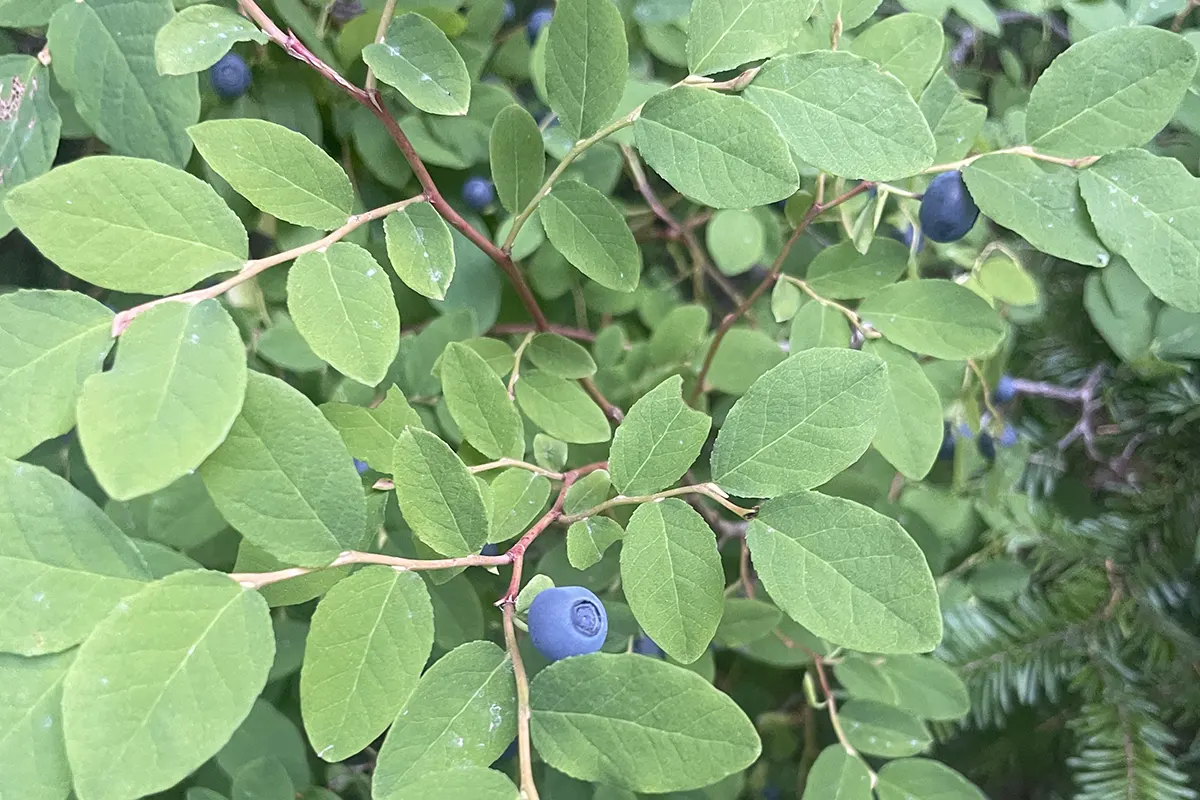
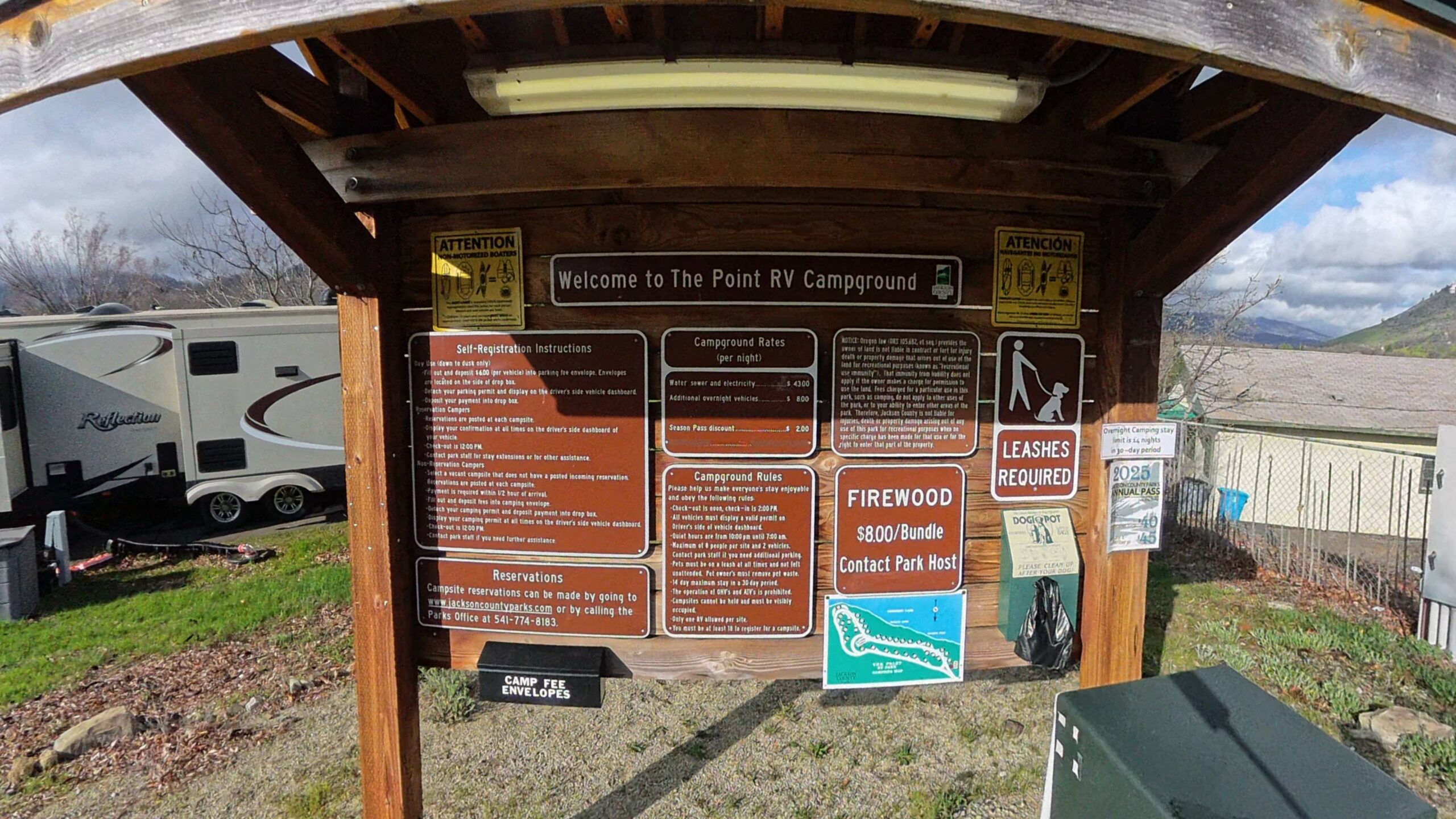
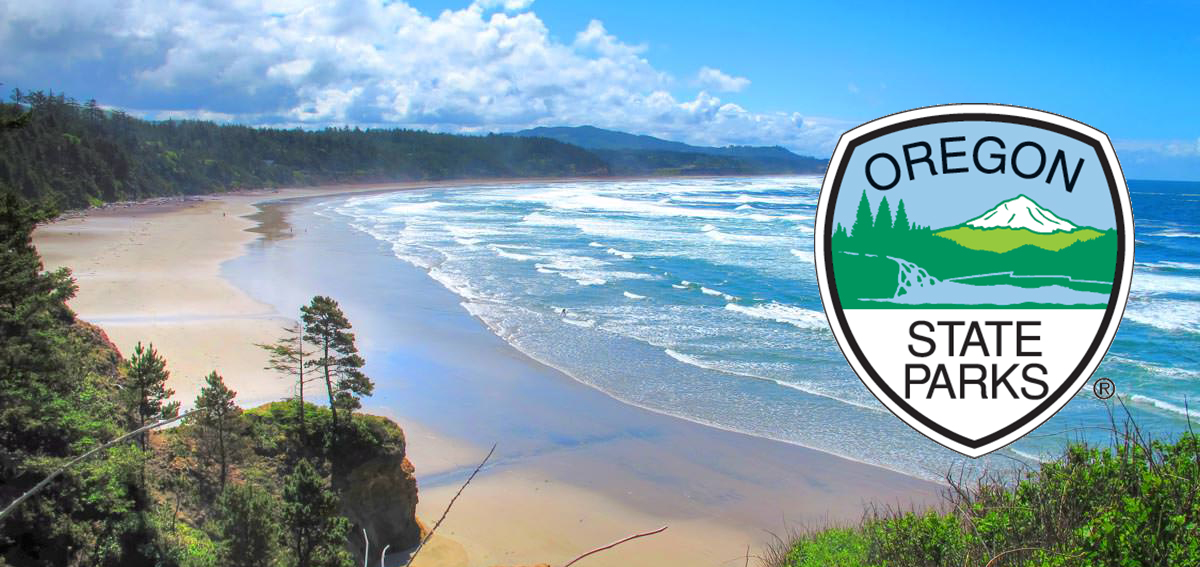
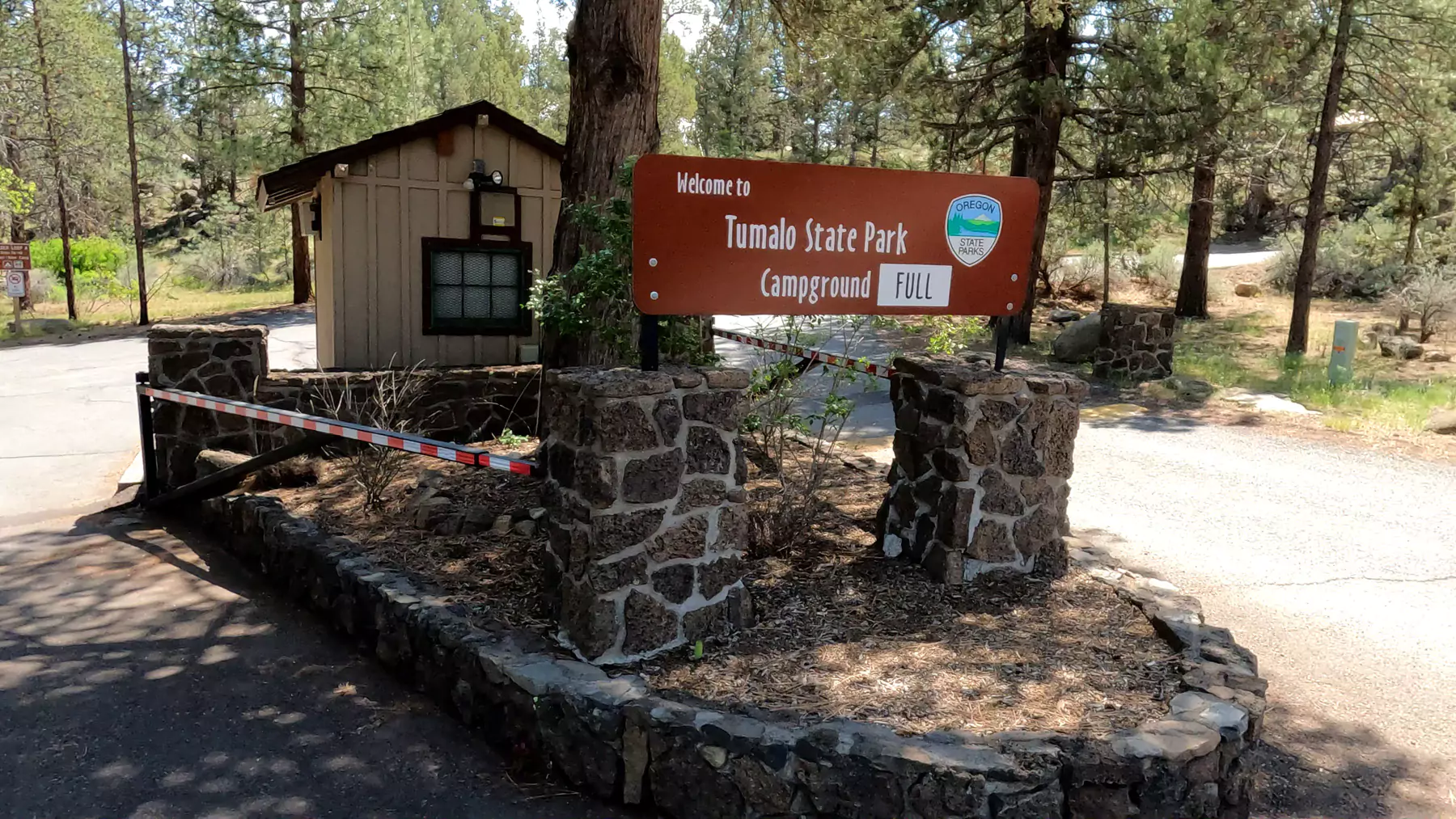

Responses